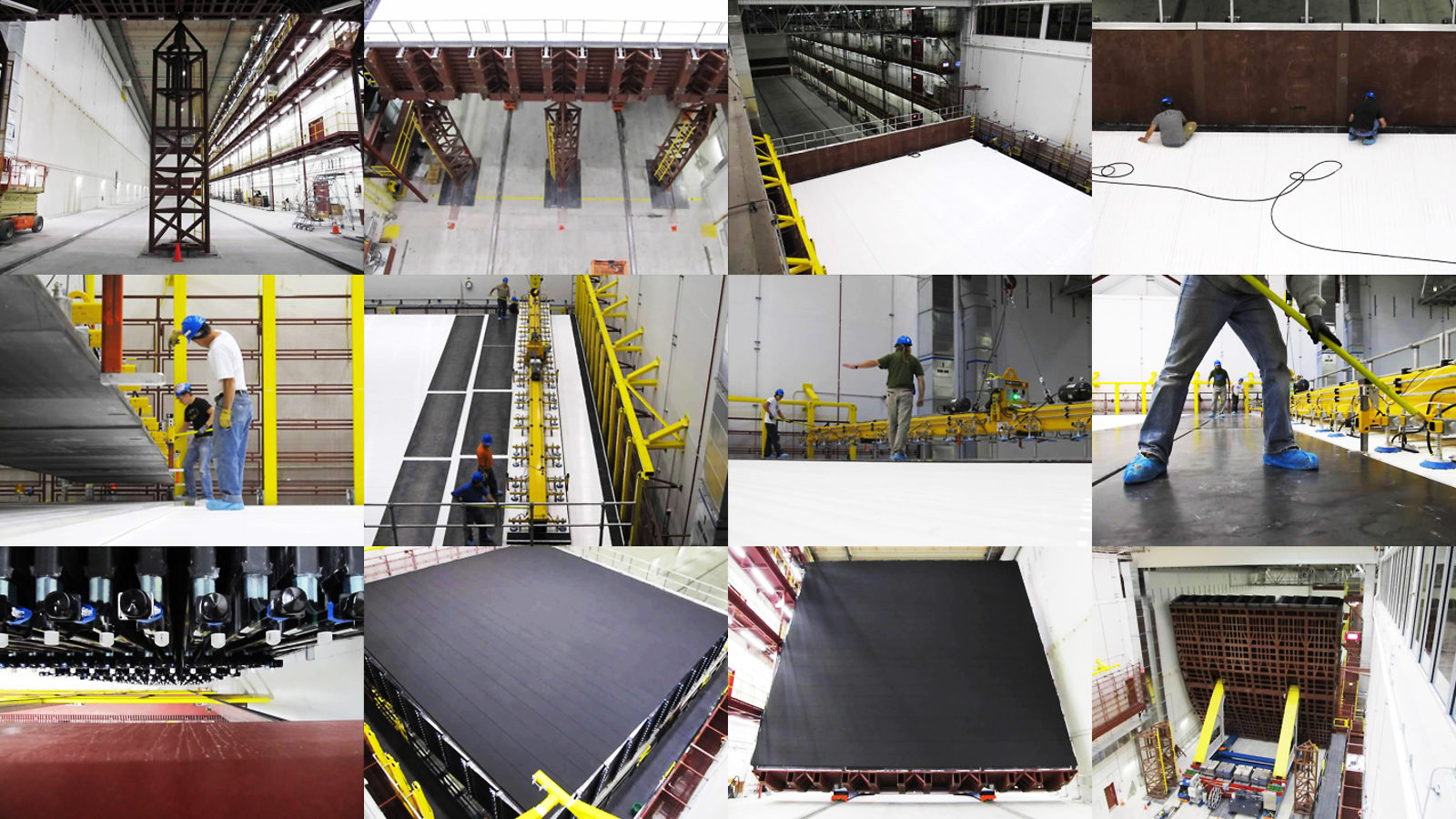When it comes to designing an experiment that looks for the universe’s smallest particles, bigger is better. But when the experiment is so big that it spans multiple states, sometimes scientists need to find a way to keep everyone in the loop. That’s why the NOvA experiment is broadcasting real-time video showing the construction of its 14,000-ton neutrino detector.
“NOvA is a huge experiment,” says Fermilab physicist and NOvA deputy project manager Rick Tesarek. “The experiment is based at Fermilab, but the majority of the construction is taking place 500 miles away in rural Minnesota. People sometimes feel distanced from it, which is why we installed these cameras so that everyone can watch NOvA’s progress.”
When the NOvA experiment starts taking data in 2013, it will look for neutrino shape-shifting: specifically, the transformation of muon neutrinos into electron neutrinos. Neutrinos produced at Fermilab will pass through a 200-ton on-site detector, travel 500 miles through the earth, and eventually arrive at a 14,000-ton detector located in Ash River, Minn. Both detectors will measure the types and abundance to the neutrinos; if their measurements don’t match, the collaboration will have solid proof that neutrinos are transmuting into different types.
Cameras mounted at the Ash River construction site provide streaming video of the 15.6-meter-by-15.6-meter-by-61-meter detector being assembled and installed.
“These cameras give people a visual of what’s going on,” says project manager John Cooper. “We want people to know what’s happening.”
Click here to watch the real-time streaming video of the NOvA far detector hall looking downstream, and click here to view the detector hall looking upstream. You can also view a time-lapse video showing the installation of the first NOvA detector block below. When complete in early 2014, the detector will include 28 such blocks.







